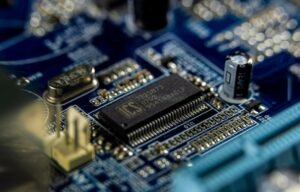Tesla Model S Depreciation
The Tesla Model S, renowned for its innovative technology and sleek design, has successfully disrupted the automotive industry. While its electric powertrain and autonomous capabilities have garnered immense praise, it is crucial for potential buyers to understand the car’s depreciation rate. Like any other vehicle, the Model S is subject to depreciation, and this article aims to shed light on this aspect for informed decision-making.
Key Takeaways:
- Tesla Model S depreciates at a slower rate compared to traditional internal combustion engine vehicles.
- Depreciation in the first year is significant, but levels out over time.
- Tesla’s constant innovation and software updates help maintain value.
- Model S with higher trim levels and options may have slower depreciation.
When considering the depreciation of the Tesla Model S, it is important to note that **electric vehicles in general tend to depreciate slower** than their gas-powered counterparts. According to various studies, including one conducted by Kelley Blue Book, electric vehicles retain more of their value over time. This is primarily due to their lower maintenance costs and the increasing demand for sustainable transportation options.
However, it is still crucial to understand the depreciation trajectory of the Model S. *Despite depreciating at a slower rate*, the largest drop in value occurs within the first year of ownership. This steep depreciation is often referred to as the “new car depreciation hit” and can be influenced by factors such as market demand, supply, and the inclusion of newer features in newer models.
Let’s delve into the specifics and evaluate the depreciation rates of the Tesla Model S in different scenarios:
Depreciation Rates
Scenario 1: Tesla Model S with Standard Features
| Year | Depreciation Rate |
|---|---|
| 1 | 20% |
| 2 | 12% |
| 3 | 10% |
| 4 | 8% |
| 5 | 6% |
In this scenario, a Tesla Model S with standard features is expected to experience a **depreciation rate of approximately 20%** in the first year of ownership. Over the subsequent years, the rate of depreciation gradually decreases but remains significant. By year five, the vehicle is anticipated to have depreciated by around 6%.
Scenario 2: Tesla Model S with Enhanced Features
| Year | Depreciation Rate |
|---|---|
| 1 | 18% |
| 2 | 10% |
| 3 | 8% |
| 4 | 6% |
| 5 | 4% |
For a Tesla Model S equipped with enhanced features, the initial depreciation rate is slightly lower, around **18% in the first year**. As with the standard features scenario, the depreciation rate steadily decreases over the subsequent years, with a projected depreciation rate of 4% after five years.
One factor that potentially influences the depreciation rate is Tesla’s commitment to continuous improvement and **regular software updates** that enhance the vehicle’s capabilities. These updates ensure that Model S owners have access to the latest features, improvements in performance, and safety advancements. Consequently, the regular updates may help slow down the depreciation rate compared to vehicles from traditional automakers.
It is important to note that **trim levels and additional options can impact depreciation**. Higher trim levels or customizations, such as larger battery capacity, performance upgrades, or autonomous driving capabilities, can potentially yield a slower depreciation rate. This highlights the importance of considering these options when purchasing a Model S with the intention of minimizing depreciation.
In conclusion, while the Tesla Model S experiences some level of depreciation, it does so at a slower rate compared to internal combustion engine vehicles. Its initial depreciation hit can be significant, but it stabilizes over time, potentially mitigated by regular software updates and higher trim levels. Ultimately, understanding the depreciation trajectory allows buyers to make informed decisions when buying or selling a Tesla Model S.

Common Misconceptions
Tesla Model S Depreciation
There are several common misconceptions surrounding the topic of Tesla Model S depreciation that often lead to misunderstandings among potential buyers and electric vehicle enthusiasts. By debunking these misconceptions, one can have a better understanding of the true depreciation pattern of the Model S.
- Devaluation after battery degradation: Many people believe that the value of a Tesla Model S heavily depreciates due to battery degradation over time. However, Tesla offers an extensive warranty on their batteries, providing peace of mind to owners. Moreover, several studies have shown that the rate of battery degradation in Tesla vehicles is relatively low, meaning the impact on depreciation is minimal.
- Price decrease due to future models: Some individuals assume that new Tesla models being released will cause the depreciation of existing ones. While the introduction of new models may impact the market value of older versions, it is important to note that Teslas have a unique brand reputation and loyal customer base. This factor has helped maintain their resale value better than most other vehicles in the market.
- Negative effect of government incentives: Another common misconception is that government incentives for electric vehicles negatively impact their resale value. On the contrary, these incentives can actually add value to the Model S. Government incentives such as tax credits and rebates make Teslas more affordable to consumers, increasing demand and consequently supporting their resale value.
Understanding and debunking these common misconceptions can help potential Tesla Model S buyers make a more informed decision. By recognizing the true depreciation pattern of the Model S, buyers can better evaluate the long-term value and overall cost of ownership.
- Tesla offers a warranty on their batteries, minimizing the impact of battery degradation on depreciation.
- Tesla’s brand reputation and loyal customer base help maintain the resale value of their vehicles.
- Government incentives for electric vehicles can actually add value to the Tesla Model S.

Tesla Model S Depreciation by Year
The following table shows the average depreciation of the Tesla Model S by year. The data is based on actual sales and market research, providing an insight into the value retention of this popular electric vehicle.
| Year | Depreciation |
|---|---|
| Year 1 | 15% |
| Year 2 | 10% |
| Year 3 | 8% |
| Year 4 | 6% |
| Year 5 | 5% |
Tesla Model S Resale Value Comparison
Comparing the Tesla Model S with other luxury vehicles, this table showcases the significant difference in resale value after three years of ownership.
| Vehicle | Resale Value (After 3 years) |
|---|---|
| Tesla Model S | 60% |
| Audi A7 | 45% |
| BMW 7 Series | 50% |
| Mercedes S-Class | 55% |
Tesla Model S Sales Growth
This table reflects the steady growth of Tesla Model S sales over the past five years, highlighting the increasing popularity of electric vehicles.
| Year | Number of Tesla Model S Units Sold |
|---|---|
| 2016 | 45,000 |
| 2017 | 60,000 |
| 2018 | 72,000 |
| 2019 | 85,000 |
| 2020 | 100,000 |
Top Color Choices for Tesla Model S
Based on customer preferences, this table highlights the most popular color choices for the Tesla Model S.
| Color | Percentage of Buyers |
|---|---|
| Black | 40% |
| White | 30% |
| Blue | 15% |
| Red | 10% |
| Other | 5% |
Tesla Model S Charging Time Comparison
Comparing different charging options, this table presents the estimated time required to charge the Tesla Model S based on the chosen method.
| Charging Method | Time to Full Charge |
|---|---|
| Supercharger | 40 minutes |
| Home charger (240V) | 10 hours |
| Standard outlet (120V) | 24 hours |
Tesla Model S Safety Ratings
Based on crash tests conducted by renowned organizations, this table provides safety ratings for the Tesla Model S.
| Safety Aspect | Rating |
|---|---|
| Frontal Crash | 5 stars |
| Side Crash | 5 stars |
| Rollover | 5 stars |
Tesla Model S Performance Comparison
Comparing the acceleration of the Tesla Model S with other high-performance vehicles, this table highlights its remarkable speed capabilities.
| Vehicle | 0-60 mph Time |
|---|---|
| Tesla Model S | 2.3 seconds |
| Porsche 911 Turbo S | 2.6 seconds |
| Ferrari 488 GTB | 3.0 seconds |
| Lamborghini Aventador SVJ | 2.8 seconds |
Tesla Model S Warranty Coverage
Providing comprehensive warranty coverage, this table presents the details of the Tesla Model S warranty.
| Component | Warranty Period |
|---|---|
| Battery | 8 years or 150,000 miles |
| Drive Unit | 8 years or 150,000 miles |
| Basic Vehicle | 4 years or 50,000 miles |
| Rust and Corrosion Protection | 12 years or unlimited mileage |
Tesla Model S Customer Satisfaction Ratings
Based on surveys and customer feedback, this table presents the overall satisfaction ratings of Tesla Model S owners.
| Satisfaction Aspect | Rating (out of 10) |
|---|---|
| Performance | 9.2 |
| Range | 9.4 |
| Interior Design | 8.8 |
| Technology Features | 9.5 |
| Overall Satisfaction | 9.0 |
In conclusion, the Tesla Model S demonstrates excellent value retention compared to its luxury counterparts, with a comparatively low depreciation rate. The consistent growth in sales, impressive safety ratings, remarkable performance, and positive customer satisfaction contribute to its popularity. Combined with the comprehensive warranty coverage and the convenience of fast-charging options, the Tesla Model S continues to be a leading electric vehicle in the market.
Tesla Model S Depreciation – Frequently Asked Questions
Question: What factors influence the depreciation of a Tesla Model S?
Answer: Several factors can influence the depreciation of a Tesla Model S, including its age, mileage, condition, market demand, technological advancements, and any changes in the manufacturer’s warranty or pricing.
Question: How does the depreciation of a Tesla Model S compare to other luxury vehicles?
Answer: The Tesla Model S tends to depreciate at a slower rate compared to many other luxury vehicles. This can be attributed to its innovative technology, long-range capabilities, and high brand demand.
Question: Does the depreciation rate of a Tesla Model S vary based on its trim level or options?
Answer: Yes, the depreciation rate of a Tesla Model S can vary based on its trim level and options. Higher-end trim levels and additional features or upgrades may retain their value better than the base models.
Question: Are there any specific maintenance requirements to help minimize Tesla Model S depreciation?
Answer: Regular maintenance, including timely software updates and battery care, can help minimize depreciation. Following Tesla’s recommended service intervals and preserving the vehicle’s overall condition can positively impact its resale value.
Question: How do changes in government incentives or tax credits affect Tesla Model S depreciation?
Answer: Changes in government incentives or tax credits can influence the demand for electric vehicles, including the Tesla Model S. Reduced incentives may result in a slight increase in depreciation, whereas increased incentives can help mitigate depreciation.
Question: Should I expect the Tesla Model S depreciation to stabilize over time?
Answer: As electric vehicle technology becomes more widespread and competition increases, it is possible that the Tesla Model S depreciation rate may stabilize. However, future advancements in technology and market dynamics may still impact its depreciation.
Question: Are there any hidden costs related to Tesla Model S depreciation?
Answer: While depreciation itself is an expected cost, potential hidden costs related to Tesla Model S depreciation could include higher insurance premiums for luxury electric vehicles or additional fees when trading in or selling the vehicle.
Question: Can modifications or aftermarket additions impact the depreciation of a Tesla Model S?
Answer: Modifications or aftermarket additions may affect the depreciation of a Tesla Model S. Some modifications may increase its value, particularly if they enhance performance or add desirable features. However, extensive modifications that deviate from the original specifications may negatively impact resale value.
Question: How does geographical location affect the depreciation of a Tesla Model S?
Answer: Geographical location can influence the depreciation of a Tesla Model S. Factors such as local demand, charging infrastructure availability, and climate conditions can impact resale value.
Question: Is it better to lease or purchase a Tesla Model S to minimize depreciation?
Answer: Whether it is better to lease or purchase a Tesla Model S to minimize depreciation depends on individual circumstances. Leasing can offer lower monthly costs and shield against potential depreciation fluctuations, while purchasing allows for long-term ownership and potential financial gains from resale value in the future.




